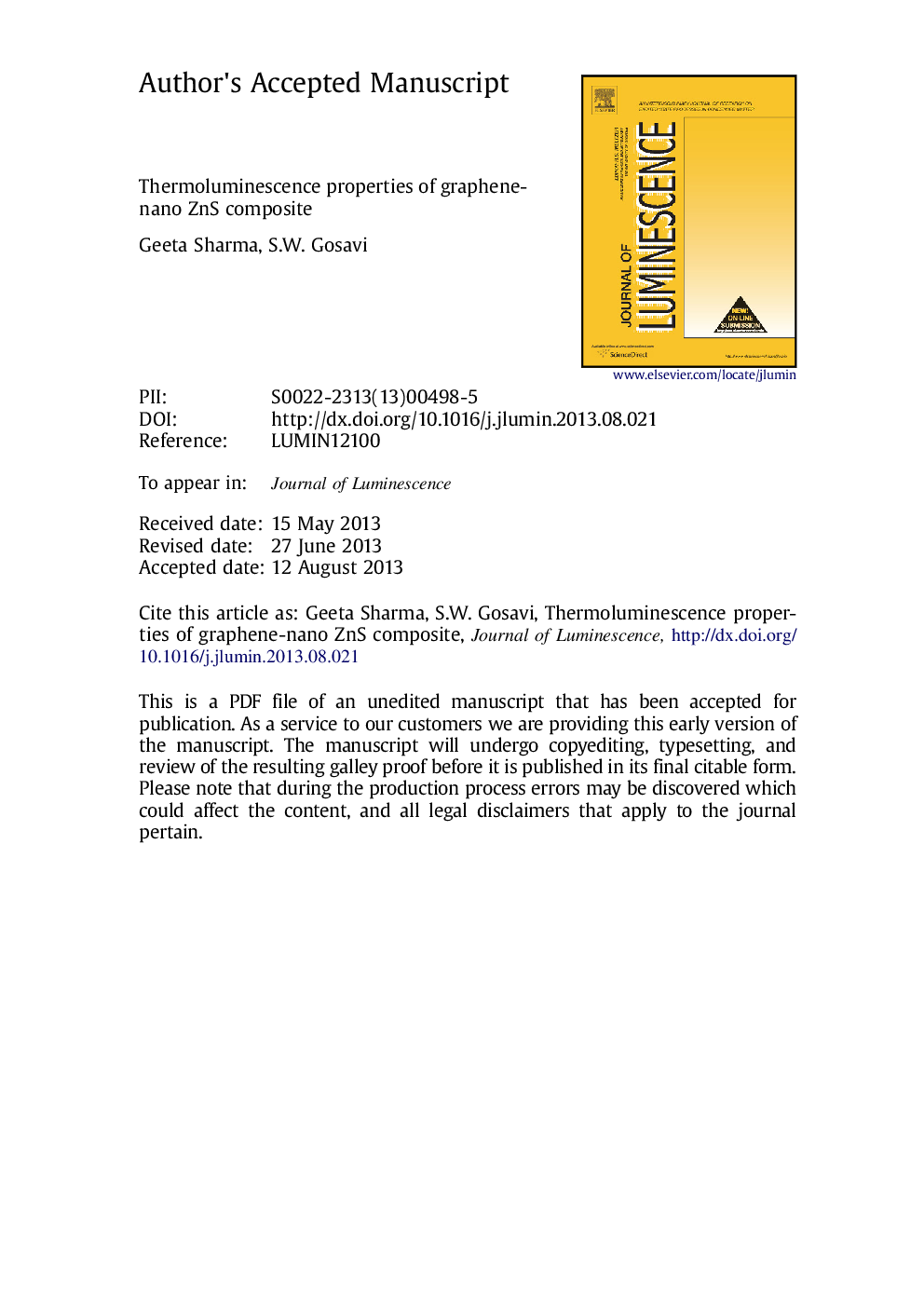| کد مقاله | کد نشریه | سال انتشار | مقاله انگلیسی | نسخه تمام متن |
|---|---|---|---|---|
| 5400217 | 1505915 | 2014 | 25 صفحه PDF | دانلود رایگان |
عنوان انگلیسی مقاله ISI
Thermoluminescence properties of graphene-nano ZnS composite
دانلود مقاله + سفارش ترجمه
دانلود مقاله ISI انگلیسی
رایگان برای ایرانیان
کلمات کلیدی
موضوعات مرتبط
مهندسی و علوم پایه
شیمی
شیمی تئوریک و عملی
پیش نمایش صفحه اول مقاله

چکیده انگلیسی
This work describes the thermoluminescence (TL) of graphene oxide (GO), reduced graphene oxide (RGO) and graphene-nano ZnS composite. Graphene oxide was synthesized using Hummer's method and then reduced to graphene by hydrazine hydrate. G-ZnS was synthesized via in-situ reduction of graphene oxide (GO) and zinc nitrate [Zn(NO3)2] by sodium sulfide (Na2S). The structures of samples were characterized by X-ray diffraction (XRD) and transmission electron microscope (TEM). XRD pattern confirmed the formation of graphene oxide, reduced graphene oxide and G-ZnS lattice. The p-XRD spectrum of G-ZnS shows peaks of ZnS superimposed on those of graphene and the particle size of ZnS in the complex is less than 10 nm. Ultra thin graphene and graphene oxide sheets with size ranging between tens to several hundreds of square nanometers are observed in TEM images. The TEM micrographs of G-ZnS show that ZnS particles are embedded in graphene sheets and the average particle size of ZnS particles in the composite is less than 10 nm. Samples of RGO, GO and G-ZnS were exposed to different doses of γ-rays in the range of 1 Gy to 50 kGy. The reduced graphene oxide (RGO) did not show any thermoluminescence emission. The thermoluminescence glow curve of GO has a single broad peak whose peak position varied between 500 and 550 K with an absorbed dose increasing from 1 Gy to 5000 Gy. GO shows most intense TL peak, positioned at 523.6 K for a dose of 10 kGy. The glow curves of G-ZnS over the entire range of irradiation have single peak positioned between 492 and 527 K with variation in dose from 1 Gy to 50 kGy. G-ZnS shows the most intense TL glow curve for a dose of 50 kGy. The TL response curve of G-ZnS is found to be linear over a larger dose range from 1 Gy to 50 kGy whereas the response curve of GO shows linearity only at low doses up to 100 Gy.
ناشر
Database: Elsevier - ScienceDirect (ساینس دایرکت)
Journal: Journal of Luminescence - Volume 145, January 2014, Pages 557-562
Journal: Journal of Luminescence - Volume 145, January 2014, Pages 557-562
نویسندگان
Geeta Sharma, S.W. Gosavi,